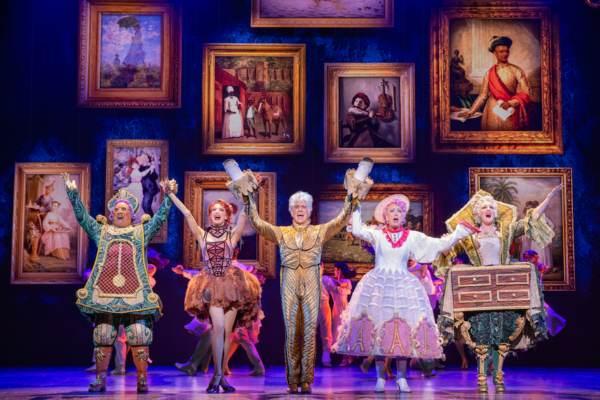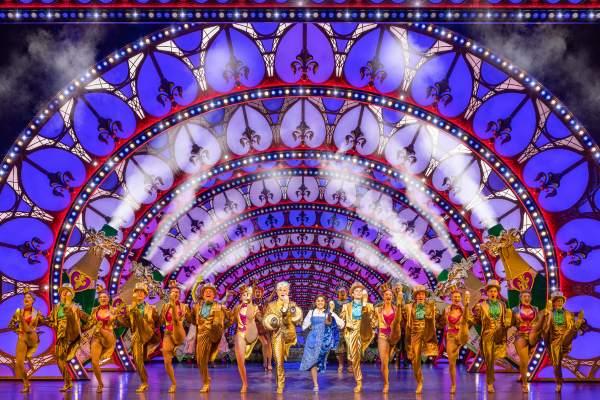Disney’s 'Beauty And The Beast' may be a 'tale as old as time', but in 2025 its themes feel strikingly urgent and relevant.
The story pointedly juxtaposes two forms of masculinity: Gaston’s dangerous chauvinism and the Beast’s wounded, redeemable soul. Gaston is a bicep-flexing gym bro alpha male – a character uncannily familiar in the age of 'make me a sandwich' misog-influencers Andrew Tate and online incel subcultures. His entitlement and violent pursuit of Belle who dared say no decades before #metoo, make the cautionary aspect of his character especially resonant. In such cases, it sometimes takes the people around you, like Beast’s servants, to instigate self-reflection and insight. In an era of conversations about gender roles, consent, and domestic abuse, Belle and the Beast’s relationship, founded on patience, mutual respect, and seeing past surface differences. carries a hopeful message about the redemptive power of love.
The production team really rings the 'belle' with the tech wizardry. Stanley A. Meyer’s cartoon fairytale imagery whisks us from Belle’s village to the Beast’s enchanted castle in seconds. A central theme of the show is Beast trying to coax Belle down for dinner; Cogsworth cooks everything in the kitchen. Well, the tech wizards have left nothing in the cupboards here. One stand-out bit of stage magic is the portrayal of young Chip (Jared Bickerton): the wee teacup character appears as a disembodied head atop a rolling tea cart. It’s a delightful optical trick that leaves spectators enchanted, and maybe a little concerned, unjustifiably, for their welfare. . . Did they fold them up like an accordion? No, it’s all smoke and mirrors.

Image © Daniel Boud
The choreography too embraces innovation: director-choreographer Matt West (returning from the original Broadway creative team) stages numbers in grand, cinematic style. 'Be Our Guest' is a show-stopper. There’s a moment when the ensemble forms geometric patterns which is filmed from above; it’s like synchronised swimming. It’s all very 'Moulin Rouge', complete with kick-lines, singing plates, and tap-dancing cutlery under a Baz Luhrmann excess of lit arches. When the song finishes, the cheer is louder than the 50 thousand gathered across the road at Adelaide Oval for the Showdown.
Still, there are times when the spectacle threatens to outshine the story’s more poignant moments. The Beast’s Act I solo 'If I Can’t Love Her' – his dark night of the soul – is meant to be the emotional climax of the first act. Brendan Xavier’s opening bars of this evoke goosebumps and hit right at the heart. Yet the staging around him, while impressive, can feel a tad too busy – grand orchestration, dramatic lighting, and a towering set that, for some, might dilute the song’s raw intimacy. While 'parking and barking' is frowned on in modern musicals, the baring of the soul could have justified stripping back the magic and illusions a little. Xavier’s Beast is all-shouting and terrifying in Act I, which makes the transformation feel rushed, like the final season of 'Game Of Thrones' in reverse, in Act II. A few instances of gentleness, of roses concealed by dirt, in Act I, might have made Belle’s changing feelings more believable.
Another minor critique lies in a comedic choice: Lumière’s famous French accent. Rohan Browne’s Lumière is an absolute delight – exuberant, flirtatious, and physically one of the most dynamic presences on stage. Browne opts for a nuanced take on Lumière’s French accent – it’s there, but it’s not thick like foie gras. It avoids turning Lumière into a caricature with too much ham in the croissant; but sometimes the ham is tasty.

Image © Daniel Boud
Leading the company is Shubshri Kandiah as Belle; this is not her first Disney princess rodeo. Kandiah, having charmed audiences as Jasmine in 'Aladdin' and Cinderella in recent Australian productions, portrays the heroine not as a damsel in distress but rather as a role model for young girls who want to be respected for their brains rather than judged by their appearances.
As Gaston, the vainglorious villain we all love to hate, Jackson Head exudes cartoon smarm and his eponymous beer hall clinking number is a clear crowd favourite. Credit is due to musical director Luke Hunter and the orchestra as well, who do justice to Alan Menken’s gorgeous score at every turn. Ann Hould-Ward’s updated costumes are Met Gala spectacular.
The themes of the show, from confronting toxic arrogance to looking beyond appearances, ring loud and clear in 2025, giving this fairy tale a wolfish bite. There’s no better time to be Disney’s guest.
★★★★★






